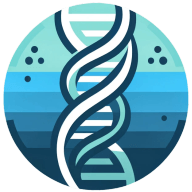6 Strategies to Tackle Complex Protein Synthesis Concepts
Protein synthesis is a fundamental process in biology, yet its complexity can often overwhelm students and researchers alike. Mastering this intricate subject requires innovative approaches that go beyond traditional textbook learning. This article explores various strategies to demystify protein synthesis, from visual aids and 3D tools to practical analogies and hands-on experiments.
- Visualizing Ribosome Function Enhances Understanding
- 3D Tools Bring Protein Synthesis to Life
- Break Down Complex Concepts Step by Step
- Use Everyday Analogies to Explain Synthesis
- Compare Protein Synthesis to Computer Programming
- Hands-on Experiments Reinforce Theoretical Knowledge
Visualizing Ribosome Function Enhances Understanding
One particularly challenging concept related to protein synthesis I encountered was understanding the intricacies of the translation process, specifically how ribosomes accurately match tRNA anticodons to mRNA codons. At first, I struggled with how this precision was achieved, especially given the complexity of the molecular machinery involved. To overcome this challenge, I dove into a variety of resources, including animations and detailed textbooks, to visualize the process step by step. I also discussed the concept with colleagues and professors, which helped me connect the theory to real-world examples in molecular biology. The breakthrough came when I began to understand how the ribosome's structure and the role of the elongation factors ensured accuracy during translation. This experience taught me the importance of persistence and collaboration in tackling complex biological concepts. It also reinforced how crucial visualization and discussions can be when learning difficult material.

3D Tools Bring Protein Synthesis to Life
Three-dimensional modeling tools can revolutionize the way students understand protein synthesis. These tools allow for a visual representation of complex molecular interactions, making abstract concepts more tangible. By manipulating virtual protein structures, learners can observe how different components fit together in the synthesis process.
This hands-on approach helps bridge the gap between theory and practical understanding. Seeing the intricate details of protein formation can spark curiosity and deepen comprehension. Take the initiative to explore 3D modeling software and witness the fascinating world of protein synthesis come to life.
Break Down Complex Concepts Step by Step
Simplifying complex protein synthesis concepts can be achieved by breaking them down into smaller, more manageable steps. This approach allows for a gradual buildup of knowledge, ensuring a solid foundation before moving on to more advanced ideas. By focusing on one aspect at a time, students can avoid feeling overwhelmed by the intricacy of the entire process.
This method also helps in identifying specific areas that may require more attention or clarification. Mastering each step individually contributes to a comprehensive understanding of the whole. Start by identifying the key stages in protein synthesis and tackle them one by one to build your expertise.
Use Everyday Analogies to Explain Synthesis
Relating protein synthesis to everyday analogies can make the subject more approachable and easier to grasp. For instance, comparing the process to a cookbook recipe can help illustrate the role of DNA, RNA, and ribosomes. This method of learning taps into existing knowledge and creates memorable connections.
By associating complex biological processes with familiar concepts, students can develop a more intuitive understanding. These analogies serve as mental shortcuts, making it easier to recall information during exams or practical applications. Explore your surroundings and try to find relatable comparisons to demystify protein synthesis concepts.
Compare Protein Synthesis to Computer Programming
Drawing parallels between protein synthesis and computer science concepts can offer a fresh perspective on this biological process. The genetic code can be likened to a programming language, with DNA serving as the source code and proteins as the executed program. This interdisciplinary approach can help students with a background in technology to leverage their existing knowledge.
Understanding these similarities can lead to innovative ways of thinking about biological systems. It also highlights the universal principles that underlie both fields of study. Consider how principles from computer science might apply to your understanding of protein synthesis and explore these connections further.
Hands-on Experiments Reinforce Theoretical Knowledge
Engaging in hands-on experiments can significantly reinforce theoretical knowledge of protein synthesis. Practical lab work allows students to observe real-world applications of the concepts they've studied. These experiences can range from simple protein extraction to more complex techniques like gel electrophoresis.
Hands-on learning activates multiple senses, creating stronger neural connections and improving long-term retention of information. It also provides valuable skills that are essential for future research or industry work. Seek out opportunities to participate in laboratory sessions or at-home experiments to solidify your understanding of protein synthesis.

